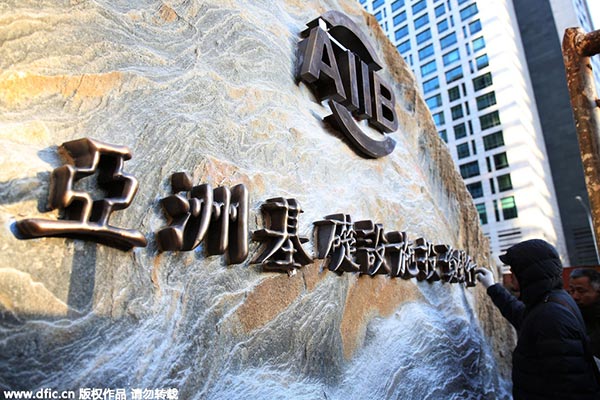What lies behind the success of AIIB


The Asian Infrastructure Investment Bank's board of governors approved the applications of three African countries-Benin, Djibouti and Rwanda-at its fourth annual meeting in Luxembourg on July 13, taking the total number of members to 100. That the AIIB's membership has reached the century mark reflects the high degree of global recognition and trust it has earned as a multilateral development bank in just three and a half years.
Meticulous planning, constructive efforts and visionary leadership are needed to make a development bank successful in today's turbulent global financial market. As a China-proposed multilateral development bank, the AIIB has been playing a pioneering role in innovative development by overcoming a series of challenges. And it has achieved success and global trust because of its strict self-discipline and painstaking pursuit of excellence.
First, China's contribution and leadership are fundamental to the AIIB's success. Fifty-seven founding members from Asia, Europe, Africa, Oceania and Latin America endorsed China's initiative to establish the AIIB, as it is designed to play a complementary role to the World Bank and the Asian Development Bank, as well as facilitate the development of developing countries.
As the largest shareholder of the AIIB and host of the bank's headquarters, China played the leading role in implementing the multilateral agreement, capitalizing the subscription share and improving the governance structure to ensure the bank functions efficiently.
Second, the emphasis on infrastructure and connectivity has provided the AIIB with a huge market and a bright future, which is important because Asia, which is the development focus of the bank, has a population of 4 billion and diverse economic and social dynamics, and requires massive funds to improve infrastructure and interconnectivity.
According to different outlook reports by international organizations such as the United Nations, the World Bank and the ADB, the investments from existing development banks-the World Bank and the ADB included-are not enough to meet the demand for infrastructure. And the AIIB could narrow this investment gap.
At its first official ceremony, the AIIB made it clear its main aim is to finance infrastructure construction to promote sustainable development and improve connectivity primarily in Asia. With this aim in mind, the AIIB explored its potential market while avoiding any conflict of interests with the development banks already active in the region, and building cooperation and collaboration with the existing development banks to promote inclusive growth.
Since January 2016, the AIIB has provided $8.5 billion in loans to 45 projects in 18 member countries in East, Southeast, South and Central Asia, the Middle East and Africa, especially in transportation, renewable energy, telecommunications, and urban development. Those projects have improved (or are expected to improve) productivity and raised the living standards of people in developing countries, and thus unleashed their economic potential.
Third, the AIIB's adherence to multilateralism and openness has helped build comprehensive partnerships both with developing and developed economies. Besides, the AIIB has set the bar at par with other multilateral development institutions and forged a good working relationship with them including the World Bank, ADB and the European Bank for Reconstruction and Development.
The governance structure and decision-making process of the AIIB are based on multilateralism. And despite China theoretically having a veto on significant issues by virtue of being the largest (about 30 percent) shareholder, it has never used it even once-and would never use it without reason.
China has helped establish the AIIB to facilitate global development and regional connectivity. And through the AIIB, China has been promoting constructive reforms in the global financial system and development institutions, without having any intention to replace them.
And fourth, the AIIB blueprint focuses on cautiously but professionally advancing development in accordance with international standards, particularly because risk-aversion is the first rule of international finance and it would be irresponsible to carry out random "social experiments" in global development.
The AIIB has prudently weighed the different and diverse requests from both developed and developing member economies before taking any decisions so that the future of the projects are not jeopardized.
More important, the AIIB has improved its operations and strengthened its governance capability in accordance with global norms, built an institutional culture, and formed dozens of professional teams. In the process, the bank has accumulated abundant experiences in investing in and maintaining sustainable infrastructure facilities. No wonder it has received the highest credit ratings from the world's three biggest rating agencies-Standard& Poor's, Moody's and Fitch.
The author is an associate professor at the School of Government, and director of the Center for BRICS Cooperation Studies at Beijing Normal University. The views don't necessarily represent those of China Daily.


































